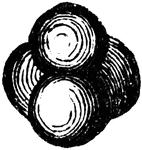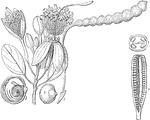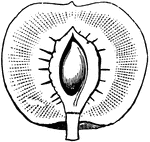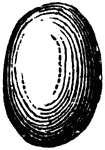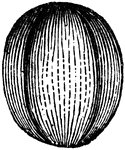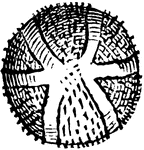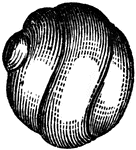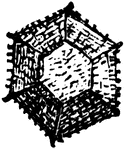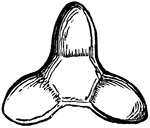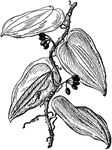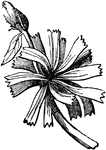
Ivy
The common ivy is a wellknown native of Britian and most parts of Europe and some parts of America.…

Juncus Effusus
Known as the soft rush, Juncus effusus is nearly as common as the most common species, J. conglomeratus.…

Softening Process in the Manufacturing of Jute
In the manufacturing of jute, the jute fiber must first be softened. The softening machine consists…

Lady's Slipper
Style of a Lady's Slipper (Cypripedium), and stamens united with it; the anther of the two good stamens;…
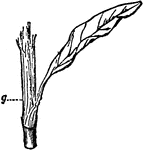
Stem and Leaf Part of Polygonum
"Polygonaceae, a natural order of Dicotyledons, containing 30 genera with about 700 species, chiefly…

Lepidium
This illustration shows stages in the germination of the gametospore of Lepidium, sectional view: A,…
Flower Stem of Lilium Chalcedonicum
Lilium chalcedonicum is a variety of lily. The flowers are bright scarlet. The stem is stiff and erect,…
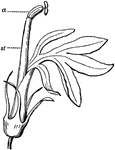
Lobelia cardinalis
Flower of Lobelia cardinalis, Cardinal flower; corolla making approach to the ligulate form; filaments…

Ovule of a Magnolia
Three early stages in the growth of ovule of a Magnolia, showing the forming outer and inner coats,…
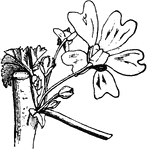
Fascicle of Mallow Flowers
The image shows a fascicle (bundle or cluster) of flowers of a mallow plant (Malvaceae).

Malvale
"Melochia graminifolia. 1. flower; 2. stamens and pistil; 3. ripe fruit; 4. a coccus; 5. section of…

Manchineel Tree Stem & Fruit
An illustration of a manchineel tree stem and fruit. The Manchineel tree (Hippomane mancinella) is a…
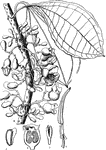
Medinilla
"1. Medinilla macrocarpa; 2. stamens of M. radicans; 3. perpendicular section of its ovary; 4. a section…

Polllinia of a Milkweed
Pollen, a pair of pollinia of a Milkweed, Asclepias, attached by stalks to a gland.

Monocotyledonous Morphology
"Morphology of typical monocotyledonous plant. A, leaf, parallel-veined; B, portion of stem, showing…
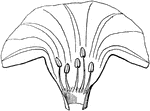
Morning Glory
Corolla of Morning Glory laid open, to show the five stamens inserted on it, near the base.

Ochna
"Ochna dubia. 1. expanded flower; 2. section of pistil and stamens; 3. pistil; 4. section of a ripe…
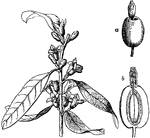
Oleaster
"Flowering Branch of Oleaster (Elaeagnus angustifolia). a, fruit; b, section of same." -Whitney, 1911
Polllinia of a Orchis
Pollinium of an Orchis (Habenaria), with its stalks attached to a sticky gland.
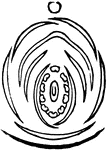
Papilionaceous Flower
Diagram of papilionaceous flower, with bract below; axis of inflorescence above.

Pistil of common St. John's-wort
Compound 3-carpellary pistil of common St. John's-wort, cut across: the three styles separate.
Pistil of Sandwort
Pistil of a Sandwort, with vertical and transverse section of the ovary: free central placenta.

Pistil of Saxifrage
Two simple carpals or pistil-leaves, united at the base only, cut across both above and below.
Pistil of shrubby St. John's-wort
The same of shrubby St. John's-wort; the three styles as well as ovaries here united into one.
Pistil of Spiderwort
Compound 3-carpellary pistil of Tradescantia or Spiderwort; the three stigmas as well as styles and…
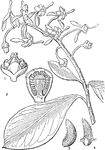
Ruyschia
"Ruyschia amazonica. 1. a calyx and pistil; 2. a section of the ovary; 3. a seed; 4. the same, with…

Prickly Saltwort
Salsola kali. This plant is also called a Russian Thistle, Prickly Glasswort, Tumbleweed, and Glasswort.…

Rock Samphire
"Upper part of stem with the inflorescence of Samphire (Crithmum maritimum). (a), a flower; (b), the…

Summer Savory
The Summer Savory (Satureja hortensis) is a flowering plant of the Lamiaceae family. The image shows…
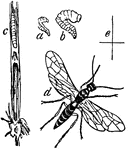
Corn Sawfly
"Corn Sawfly: a, maggot, natural size; b, maggot, magnified; c, the maggot in its ear in the stem of…

Early Saxifrage
"Flowering plant of saxifrage (Saxifraga virginiensis). a, a flower; b, the fruit." -Whitney, 1911

Scaled Leaves
A variety of leaves with scales: "a, the scale-like leaves of the stem of Lathraea squamaria (toothwort);…
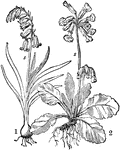
Scapes
A scape is a flowering, leafless stem; shown here on two different plants. "1. Wild hyacinth (Scilla…

Silene Pennsylvanica
Longitudinal section of flower of Silene Pennsylvanica, showing stipe between calyx and corolla.
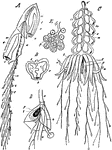
Siphonophora
"Floating colonies of Siphonophora. A, Diphyes campanulata. B, A group of appendages from the stem of…

Maryland Black Snakeroot
"Flowering plant of sanicle (Sanicula marilandica). (a), a male flower; (b), the fruit." -Whitney, 1911

Seneca Snakeroot - Roots and Base of the Stem
"Polygala senega of eastern North America. It sends up several stems from hard knotty root-stocks, bearing…
